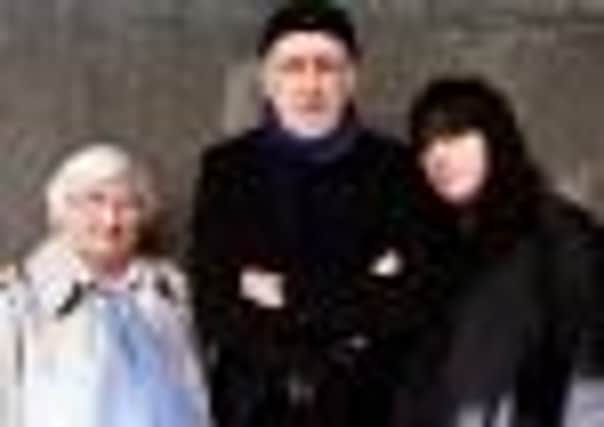Scots who have made their mark in the fashion world
This article contains affiliate links. We may earn a small commission on items purchased through this article, but that does not affect our editorial judgement.


The new breed of designers heading Scotland’s recent runway takeover, including Chris Kane, Jonathan Saunders, Holly Fulton and Louise Gray (all SFA 2012 nominees) may be generating media coverage to unprecedented levels, but Scots in the fashion industry are nothing new. Happily, they’re just on the increase.
ALBERT WATSON
Photographer Albert Watson was born in Edinburgh in 1942, grew up in Penicuik, and attended Edinburgh’s Rudolf Steiner School and Lasswade High School, before studying graphic design at Duncan of Jordanstone and emigrating to L.A. in 1970. With campaigns for Chanel, Gap, and Levi’s; photographs in the permanent collections of the National Portrait Gallery and the Metropolitan Museum of Art; and over 200 Vogue covers to his name, Watson (blind in one eye since birth) is recognised as one of the most influential fashion photographers of all time, and is a recipient of the Centenary Medal, the Royal Photographic Society’s lifetime achievement award.
KIRSTY HUME
Advertisement
Hide AdAdvertisement
Hide AdAyr-born Kirsty Hume was among the greats of the 1990s supermodels, and is to date still the only Scot to lay legitimate claim to the term. She was discovered by legendary photographer Patrick Demarchelier aged 16 and has covered Vogue, Elle, W and Harper’s Bazaar. As the face of Chanel and having also worked with Dior, Ralph Lauren, Louis Vuitton, Gucci, Versace, Valentino and Yves Saint Laurent, Hume’s trademark mane of baby blonde hair and Boticelli features marked her out as the most feminine and ethereal of her fellow waif army members. Scottish to the core she married Donovan Leitch (son of Scottish troubadour Donovan) on the banks of Loch Lomond and once answered the question “What’s the best part of modelling?” with “The money”.
JEAN MUIR
Although born in London, designer Jean Muir attributed her discipline and pragmatism to her Aberdonian father. Recognised as one of the twentieth century’s most influential designers, and part of the group of Brits who defined 1960s fashion, Muir worked her way up from the stock room at Liberty to the ready-to-wear department, moving on in 1956 to Jaeger, where she developed the Young Jaeger label. She set up her own label in 1966, where she developed the aesthetic of minimalism and fluidity she was to be known for. Timeless and effortless, Muir’s pieces were worn by Joanna Lumley, her muse and friend; Lauren Bacall; Charlotte Rampling; and more recently vintage fans Kate Moss, Sienna Miller and Stella McCartney.
RANKIN
Photographer John Rankin Waddell was born in Glasgow in 1956, and is now better known by his middle name alone. Rankin’s images run the spectrum from edgy to establishment, including iconic portraits of subjects as varied as the Queen, Bjork, Britney Spears, Tony Blair and David Bowie, and campaigns for Nike and Coca Cola. Inducted into the Scottish Fashion Awards Hall of Fame last year, his influence has extended far beyond the lens, as one of the founders (alongside college friend Jefferson Hack) of hugely influential style magazine Dazed & Confused, and subsequent avant garde fashion titles RANK and Another Magazine.
SAM MCKNIGHT
The original high fashion backstage session stylist, Scottish hair stylist Sam McKnight’s 30-year career defines a previously non-existent occupation, one held by only a handful of hair stylists in the world. McKnight’s portfolio includes groundbreaking and era-capturing work with an exhaustive list of models, including Linda Evangelista, Naomi Campbell and Gisele Bundchen; photographers including Steven Meisel, Irving Penn and Bruce Weber; and designers and labels including Karl Lagerfeld, Prada, Vivienne Westwood and Dior. At the vanguard of the supermodel revolution of the late 1980s and early 90s, more recently McKnight reinvented Princess Diana with her short, slicked back look, doing the same for a then-unknown Agyness Deyn with a peroxide crop; styled Cate Blanchett’s hair for her Oscar win; and turned Lady Gaga grey, kickstarting a global trend for grandmotherly tresses.
RAY PETRI
Founder of the influential street style label and collective Buffalo, Ray Petri’s name may not be well-known outside the fashion industry, but, ironically, his influence extends perhaps further over those ambivalent to fashion than any figure they could name. Born in Dundee in 1948 (he died in 1989 of AIDS-related illness), Petri was a stylist before people knew there was such a job, and pioneered the post-punk anti-power dressing, anti-designer DIY look of the 1980s that still forms the basis of street style 30 years later. Working most notably with fledgling titles The Face, i-D and Arena, Petri created a tough and sexually charged (and ambivalent) aesthetic using elements recognised as standard urban fashion today, including bomber jackets, pork pie hats, sportswear, underwear as outerwear, combat boots, heavy gold jewellery, brogues and Crombie coats, that were not seen in magazines until he put them there. Using mixed race models and unknown teenagers (at a time when Amazonian blondes were the beauty standard), his influences were a diverse mix of Caribbean style, gang culture, punks, boxing and mods, jumbled together to create a world most famously celebrated by Neneh Cherry in her 1988 hit Buffalo Stance.